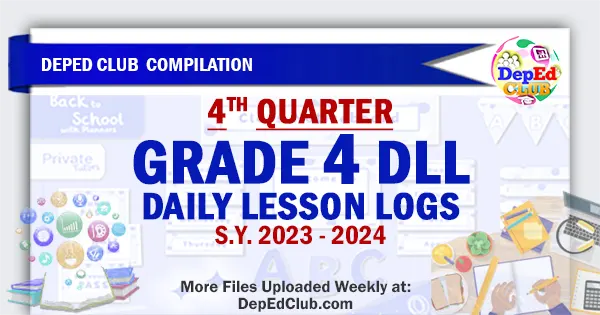To help teachers create engaging lessons while ensuring students have the necessary resources to succeed, we are constantly uploading our ready-made Week 6 – Quarter 4 Grade 4 Daily Lesson Log | May 6 – 10, 2024 DLL. Our long-term goal is to consistently update and publish our ready-made weekly Grade 4 Daily Lesson Logs. Just visit this page regularly for the latest uploads.
We are grateful to all of our Contributors, File Editors and Tech Volunteers who worked sacrificially and without hesitation to manage the content of our website and social media accounts. Thank you to everyone for your continued support.
Internet Bandwidth and Screen Time in Distance Learning
Internet bandwidth represents the speed at which data can be transferred over a network or internet connection. It’s like the capacity of a pipe determining how much water can flow through it at once. When you watch a video online, the video file is a bunch of data and having larger bandwidth means you can smoothly stream it without interruptions. However, not all internet connections are the same. Faster internet usually costs more and different networks and devices can affect speed too.
For effective distance learning, having good bandwidth is crucial. Students need it to download assignments, watch instructional videos and participate in online classes without frustration. If students complain about difficulty accessing materials or slow loading times, it could be due to poor bandwidth. Teachers should consider this when planning their curriculum.
But bandwidth isn’t the only concern. Teachers also need to think about the devices students have access to. How many devices are available at home? How many users share them? And how much time can students spend on a reliable device? Understanding these factors helps teachers tailor their lessons to accommodate different situations.
Now, let’s talk about screen time. Spending too much time in front of screens can be harmful, but not all screen time is created equal. There are four main types: passive consumption (like watching TV), interactive consumption (playing games), communication (video chatting) and content creation (making digital art).
Teachers can manage screen time by diversifying activities. For example, incorporating offline tasks or encouraging students to engage in content creation can reduce passive consumption. By planning lessons that involve a variety of activities across these categories, teachers can keep students engaged and minimize the negative effects of excessive screen time.
Understanding internet bandwidth and managing screen time are essential for successful distance learning. By ensuring students have access to adequate bandwidth and incorporating diverse activities into lessons, teachers can create a more engaging and effective learning experience for all students.

